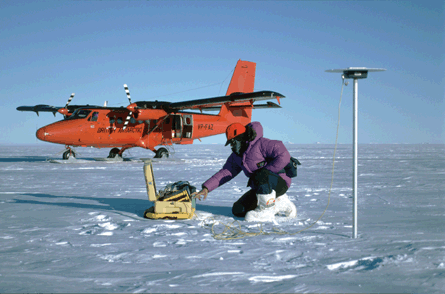The British Antarctic Survey has been awarded the International Standard for Business Aircraft Operations (IS-BAO) registration, after a rigorous assessment by the International Business Aviation Council. BAS says the accreditation was given in recognition of its safe working practices and procedures in the Antarctic's extreme environment.
"BAS's operating environment is naturally more hazardous than the normal routine operations of a small corporate aviation unit," said IBAC auditor Iain Tulloch. "The success of this audit was based on the co-operation and transparency of the organisation, and I am extremely impressed with the mature and comprehensive practical implementation of the safety management system. Without a sound safety culture, even the best systems do not work, but it is clear that at all levels of the organisation there is a strong commitment to safety when working in the polar regions."
 |
|---|
© British Antarctic Survey |
BAS director Prof Nicholas Owens welcomed Mr Tulloch's comments and highlighted the importance of aviation in achieving effective scientific research in the Antarctic and the Arctic,
"The benefits of aviation to our work at BAS are countless," he said. "If we had to rely on surface transport alone, there is no doubt the scientific research taking place in the polar regions would be less comprehensive. Aviation has and will continue to make an important contribution to vital scientific research in the polar regions."
The organisation's four de Havilland Twin Otters (DHC6-300 series) and the de Havilland Dash 7 (DHC7-110) are used in both logistical support and as science platforms. Joining the presentation were three BAS scientists, who gave a valuable insight into the importance of aircraft-supported operations in their scientific fields. For example, the Dash 7 and one Twin Otter are used extensively for geophysical surveys. Another of the Twin Otters has sensors fitted on the nose and wings for studying cloud and weather conditions. Each of these survey aircraft also have custom-fitted, large-format camera hatches for aerial photography and mapping purposes.
Source: Flight International




















